EARLIER ARRESTS IN UNDER PROTEST
GIBSON ON PHONE DURING 911 CALL
NEIGHBOR KEPT, DISASSEMBLED GUN
NO GSR EVIDENCE RE: GIBSON
VIDEOS APPEAR TO BE CUT OFF
By Diane Bukowski
(Ed. note: an individual identifying themselves as a “good friend” of Jason Gibson’s commented on VOD’s first article on his trial, saying there is a “lot more” than the police version of the case, and signing off, “FREE JAY BIRD.”
DETROIT – Wayne County Circuit Court Judge Cynthia Gray Hathaway allowed police officers involved in two prior arrests of Jason Gibson, in 2007 and 2009, to testify May 15 during his ongoing trial for multiple counts in the death of Detroit police officer Brian Huff last May.
The officers’ testimony, particularly on the 2009 arrest, drastically contradicted reports of several eyewitnesses interviewed by VOD later. (See story above.) Gibson has never even been tried and convicted on charges related to that arrest, which the jury was never told.
Gibson’s attorney Susan Reed strenuously objected on the record to the introduction of the testimony, claiming it would prejudice the jury. Reed also objected to Hathaway’s instructions to the jury about the testimony, saying they still favored the prosecution.
Hathaway told jurors, “You are about to hear evidence that will be introduced to show the defendant committed other acts for which he is not on trial. If you believe this evidence, you may only use it if it tends to show certain factors.”
Hathaway then read a prepared list to the jury, indicating the testimony must show: The defendant had reason to commit the crimes in the current case; that he knew what the things found in his possession were; that he acted purposefully, that he used a plan or scheme he had used before, that the scheme shows a pattern of reacting aggressively to police officers by trying to disarm them and then attempting to flee, and that the defendant had a lack of fear and lack of mistake in the current case.
“You must not decide that the testimony shows the defendant is a bad person or likely to commit a crime,” Hathaway said. “You must not convict him because you think he is guilty of other acts.”
Undercover Detroit police officers Thomas Rogers and Robert Skender then took the stand to testify about Gibson’s arrest on Nov. 13, 2009.
Rogers is a tall, beefy white officer with little hair on his head, and 12 years on the force.
He said officers were informed at roll call that day that a shooting had occurred at 9333 E. Jefferson earlier, and that they were given a physical and clothing description of the suspect.“I exited my scout car, I always say ‘police’ when I get out of my car,” Rogers said. “Jason Gibson looks in my direction and adjusted something in his waistband area, where you would carry a pistol.”
He said the two walked over to Gibson to conduct a pat-down, and that he felt what he thought was a gun.Mr. Gibson turned around and raised his right elbow,” Rogers said. “I immediately attempted to secure his right arm to prevent him from going for his weapon.”
He said he and Skender ended up in a “scuffle” with Gibson because he pulled the two of them onto the slippery grass and they fell on the ground. He said Gibson broke free and then began to flee westward on the sidewalk, but ran into two other officers who had arrived on the scene. He said Skender and the other two pursued Gibson as he ran back the other way.
“All of us now had some part of the defendant and began to disarm him,” Rogers said. “We obtained a weapon on the sidewalk, it was a loaded 9 mm. Smith and Wesson handgun, semiautomatic.” (This was the same make as neighbor Paul Jameson’s gun during the Huff shooting.)
Rogers said he is 6’4” tall, and weighs 260 pounds, and estimated the other officers weighed 210 and 185 pounds
Skender, a white officer wearing a Black sweat top with fatigue pants, and carrying his pistol, then testified that the four officers involved, including Harold Lewis and Victor Hicks, were assigned to the Gang Squad.He contradicted Rogers’ testimony that the two first saw him from their car.
“Myself and Officer Rogers approached the east entrance, and the others approached the west entrance, then I observed the defendant walking towards me and my partner.”
He corroborated Rogers’ testimony that the three got into a confrontation after Rogers tried to conduct a pat-down. He said he pulled his gun as Gibson started running towards Lewis and Hicks. He said they yelled “Stop, Police,” and Gibson ran into the middle of East Jefferson, then back toward Rogers.
“One of the officers pushed him, and he fell, and the gun came out of his waistband,” Skender said.
On cross exam of both officers, Reed asked if Gibson ever pointed the gun at the officers or attempted to shoot them, and they said no, he only attempted to run away. Gibson has contended that Gibson’s previous arrests show that he does not confront officers, but flees when stopped.
Officer Jesus Colons, a big, broadly built Latino officer with 11 years on the force, and testified about an Oct. 24, 2007 arrest of Gibson. He said he was working the Northeast “Special Ops” unit in plainclothes while his partner Scott Pessina (sp?) was in full uniform.
He said he arrested Gibson at 1278 McClellan, behind the 9333 E. Jefferson address, after chasing him from 1525 Belvidere.
“We were basically driving around because that’s a known narcotics area,” Colon said. “We observed a lady coming from the rear exit on Belvidere, then heard a loud crash and boom, and [Gibson] ran by me . . . . I chased him on foot and caught him. Several times I screamed out ‘Police,’ like I did the moment I started chasing him.”
He said Gibson then confronted him and told him several times that he could get Colon’s gun, then reached for it, but that the officers subdued him.
Reed objected to Colon’s testimony that the Belvidere address was a vacant, boarded-up building where they later found narcotics, but Hathaway overruled her objection.
Earlier that day, Officers Anthony Byrd and Sgt. Frank Senter took the stand. Byrd testified that he confiscated Officer Bryan Glover’s gun from him, and gave it to Sgt. Eddie Croxton. He said “I know I took his weapon but I don’t recall if I took the magazine.” Senter was even vaguer, saying he confiscated a fellow officer’s weapon but didn’t write up a report on the matter.
FBI Agent Todd Reineck alos took the stand May 15. He said he was assigned to look for the “primary” suspect, Gibson, beginning at 9:15 a.m. that day. Strangely, Gibson had already been shot by Detroit police, and in custody for at least five hours prior to Reineck’s search. Reineck said he went to two locations, one on Somerset and one on Jane, but did not locate Gibson there.
Dwayne Little, previous owner of the building at 20263-65 Schoenherr, testified that he had been foreclosed on and no longer owned the property. A Dwayne Dorian Little, Jr. of Detroit is listed in criminal records as having served time in prison for a felony firearms offense, and probation for delivery and manufacture of controlled substances, including marijuana.
Dwayne Little said he visited the property infrequently while he owned it and did not have anything to do with marijuana allegedly found in the property.
Detroit News reporter George Hunter, who covered the trial the following two days, reported in his published article (http://detnews.com/article/20110317/METRO/103170490/Cell-phone-calls-point-to-more-suspects-in-Detroit-cop’s-slaying#ixzz1GydDdJ00) that testimony regarding nine cell phone calls between Gibson and a Devi Reed, who Trzcinski said was also involved in the case as the get-away driver, was introduced.
Trzcinski said Smith was inside the duplex with Gibson and jumped out the back upstairs window, and that a third person may have been involved as well. On Mar. 15, Deandre Paymond, who is currently in custody at Jackson Prison, testified he could not recall the content of a statement he gave police after he was picked up near the residence that night, so his statement was not introduced into evidence.
Hunter reported, “Phone records show Gibson and Smith exchanged nine calls that night, including a two-minute conversation at 3:38 a.m. — the same time next-door neighbor Danielle Jameson dialed 911 to report hearing shots fired, although she later testified she wasn’t sure whether she heard shots.”
Hunter also reported that Sgt. Glynn Davis testified that Gibson’s fingerprint was found on a gray plastic bin taken into evidence 11 days after the incident. According to the News, Davis said that on the day of the incident, “The discussion was whether it should it be confiscated, but I decided not to. I didn’t think there’d be fingerprints on it because of the surface.”
However, an evidence technician testified earlier in the trial that if the bin had been taken to the forensics lab, they could have recovered fingerprints through a method other than dusting. The crime scene was left completely open to trespass during the intervening 11 days.
On Mar. 18, Officer Alan Johnson testified. He said he was on the scene when the screen door to the house opened after Huff was shot, and that he saw multiple muzzle flashes, but could not identify anyone as the person exiting the house.
He said he provided cover for “officers dragging Huff out of the house.” He testified that Jameson was present, and that he walked Jameson back to his own house, telling him, “I don’t want people to see you helping the police because of retaliation.”
On cross exam, he said Jameson had his gun with him, a .45 caliber Smith and Wesson, and that Jameson left it on the counter in the kitchen. Johnson did not confiscate the weapon. Earlier testimony was that Jameson “disassembled” the weapon and gave it to an officer who had cordoned off the area. The only other .45 caliber weapon involved in the shoot-out was a Ruger with its serial number shaved off, which Gibson was alleged to have carried.
Both guns, which strongly resembled each other, were shown to the jury in earlier proceedings.
No testimony has been entered to date indicating that Gibson was tested for gunshot residue on his hands, only testimony that there was none on the clothes that were cut off him. No testimony has been entered showing Gibson’s fingerprints on the two gallon bags of marijuana that were entered into evidence either.
The rest of the half-day session Mar. 18 was spent showing blurry videos and stills taken from several cameras around the Jameson house during the events. One camera was located under the awning on the front porch of the Jameson home, and one was mounted high on the garage in back. That camera would have had a full view of proceedings testified to in the trial regarding Gibson’s arrest, handcuffing to a fence, and sequestering of a weapon allegedly near his head by three officers.
The video forensics technician who presented the evidence said the tapes had not been altered. However, the only individual seen in them is Paul Jameson himself, as he leaves the house out of the side door to check out the back of the house next door, then takes a position on the porch with his gun drawn as what are presumed to be muzzle flashes show up on the tape.
Jameson’s wife Danielle told the Detroit News earlier that officers had spent many hours after the shooting in their basement reviewing the tapes from the cameras. It is absolutely unclear why the tapes, particularly those from the camera mounted on the garage, appear to cut off after the early events involving Jameson’s movements.
Judge Hathaway said the trial would resume Tues. March 22, with closing arguments expected. She said she was reserving Monday March 21 for in-chambers meetings with both attorneys. It in unclear whether Gibson’s attorney Susan Reed plans to present a defense case, or simply rely on contradictions in the prosecution’s case, presuming the jury will see they show reasonable doubt.

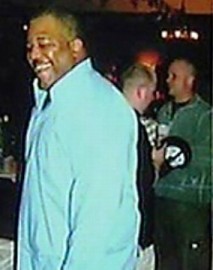
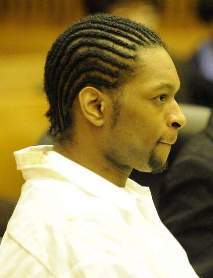
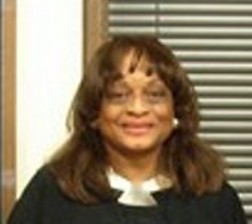
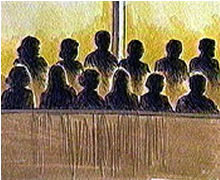
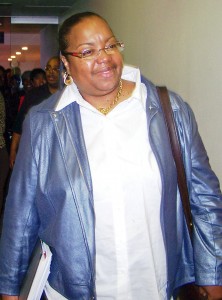
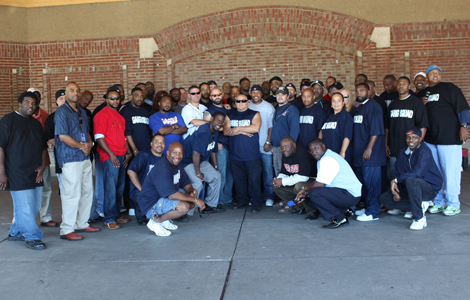
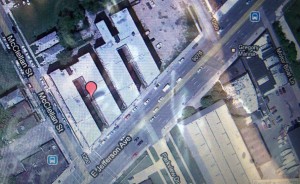
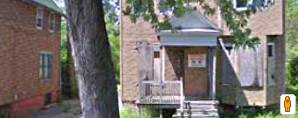
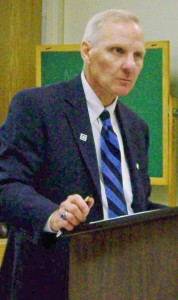




watch out for them special op’s guy’s they go in to every trial and say the same thing
one the person grabbed there right side and ether walked briskly away from them or ran from them. I have sat on a few of there gun testimony’s and they are all trained to say the same thing in all cases because they don’t want to be wrong and they will harass you if you try to prove it. They have put not guilty people in jail because the courts stand by there officers I have seen it on a few cases.
Pingback: WORTHY GOES AFTER AIYANA JONES’ DAD WITH A VENGEANCE; KILLER COPS WEEKLY, TAYLOR GET KID GLOVES | VOICE OF DETROIT: The city's independent newspaper, unbossed and unbought
WOW ! How is this ……